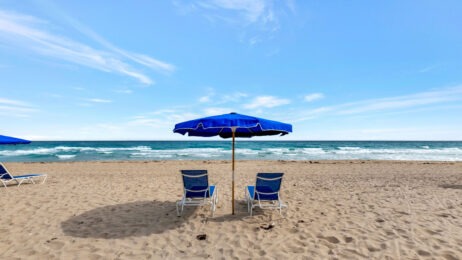We celebrate Earth Day each year. But how did it become a universal celebration of our world? Who was the mastermind behind this? Smart Meetings delves into the history of the international event.
The Roots of Earth Day
Many origin stories have been birthed regarding Earth Day, perhaps demonstrating how important this yearly observance has become to so many around the world.
Morton S. Hilbert, who, with the U.S. Public Health Service, organized the Human Ecology Symposium, a 1968 conference that informed students of environmental degradation’s impact on human health, is credited by some accounts as the originator of an Earth Day idea that seeped into the public consciousness.
Other accounts focus on tragedy in California in 1969: the Santa Barbara Oil Blowout. When an offshore well erupted in a massive spill, more than three million gallons of oil killed more than 10,000 animals, including dolphins, birds and seals. This evoked strong responses from many, and got activists thinking about a public education campaign to save the Earth from human despoliation.
Airlie, a bucolic resort located 45 miles from Washington D.C., claims that the idea of Earth Day was first announced in its meeting space. Then-Wisconsin Senator Gaylord Nelson, who is often credited as founder of Earth Day, introduced a plan to medical and law students at a conference there in 1970.
Or perhaps it all began in the winter of 1969-1970, when a group of students got together at Columbia University, where Denis Hayes, an environmental advocate, spoke of his plans for an Earth Day; inspired, these students took on a New York City observance themselves. Mayor John Lindsay shut down Fifth Avenue and opened Central Park for the festivities, where an estimated 100,000 people visited throughout the day.
EarthDay.org, when recounting the history, ties these stories together. It says that Nelson, seeing the outrage over the oil spill and inspired by student demonstrations to raise awareness about the environment, started working to make the first Earth Day a national reality. By recruiting another U.S. Senator, Republican Pete McCloskey, to serve as co-chair for a “national teach-in for the environment,” and Denis Hayes as national coordinator, Senator Nelson won the broad-based support that resulted in 20 million American taking to the streets, parks and auditoriums of the nation on April 22, 1970.
Growing Around the World
Earth Day in 1990 was especially notable, as it boosted recycling efforts worldwide. The 20th anniversary was highly publicized, with a large marketing campaign, television and radio promotion, and budgets in the multimillions. Many separate environmental groups partnered to sponsor events throughout the world. Earth Day in 2000 reached an even larger audience via the internet. The celebration was a global success, with groups around the world participating in sustainability efforts.
Celebrating the Earth in Today’s World
Now, Earth Day is the world’s largest environmental movement, and is overseen by a nonprofit organization, Earth Day Network. According to its website, the organization works with more than 50,000 partners in nearly 195 countries. More than 1 billion people now participate in Earth Day activities each year.
In fact, in many communities Earth Day has expanded to Earth Week. From environmental organizations to universities to hotels, organizations promote sustainability in many aspects. Reducing food waste, recycling water and energy conservation are only the tip of the sustainable iceberg. Earth Week is also the perfect time for environmental activists to educate the public on the critical importance of being eco-friendly, in small ways and large.
Earth Day 2018 is dedicated to “providing the information and inspiration needed to fundamentally change human attitude and behavior about plastics,” according to earthday.org.
For more information on celebrations for Earth Day, Smart Meetings has gathered a list of celebrations around the U.S. We have also compiled a list of hotels that are working to increase sustainability.




